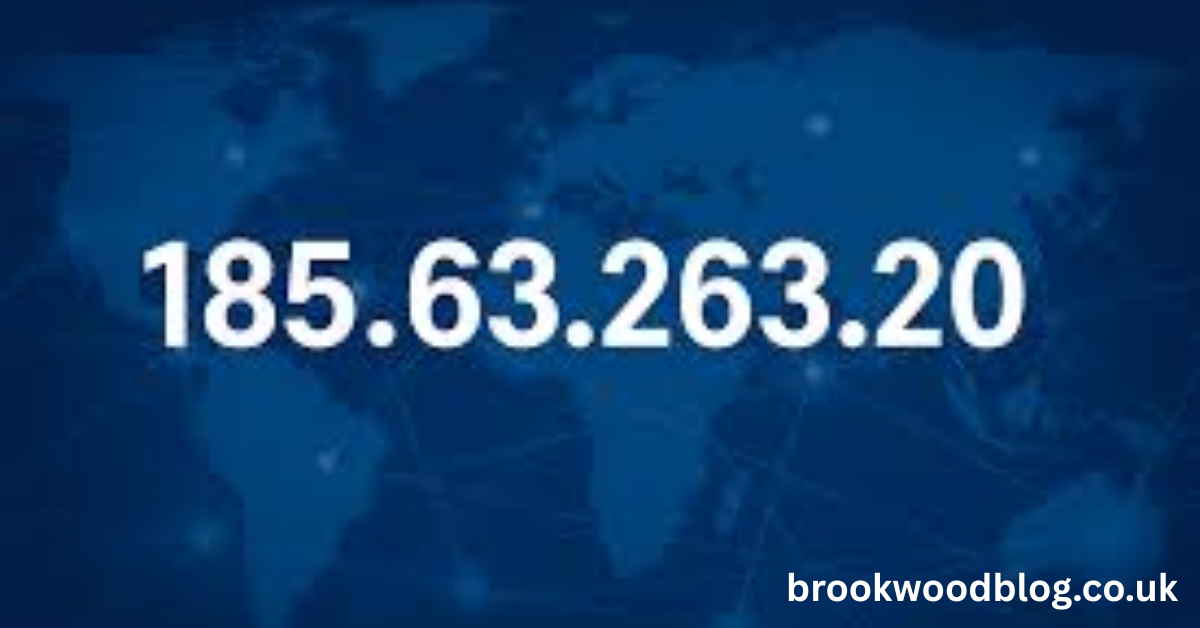In today’s digitally connected world, every device accessing the internet has a unique identifier—an IP (Internet Protocol) address. Whether you’re a cybersecurity professional, a network administrator, or just a curious user, understanding how to trace and analyze an IP address like 185.63.263.20 can reveal crucial insights. This article provides a comprehensive guide to IP lookup and threat detection, with a special focus on 185.63.263.20 as a case study.
What is an IP Address?
An IP address is a numerical label assigned to every device connected to a computer network that uses the Internet Protocol for communication. It serves two main functions: identifying the host or network interface and providing the location of the host in the network.
There are two types of IP addresses:
-
IPv4: Format like
185.63.263.20(which is our focus keyword). -
IPv6: A newer, longer format like
2001:0db8:85a3:0000:0000:8a2e:0370:7334.
Why Trace an IP Address like 185.63.263.20?
Tracing an IP address such as 185.63.263.20 can help in multiple scenarios:
-
Identifying malicious activity
-
Locating the geographical source of suspicious traffic
-
Blocking or filtering malicious IPs
-
Conducting forensic investigations
-
Understanding traffic patterns on a website
Using an IP lookup tool, you can obtain detailed information such as ISP, location, domain association, blacklist status, and more.
IP Lookup Tools: How to Trace 185.63.263.20
To trace 185.63.263.20, you can use several free and paid online tools that offer geolocation and threat intelligence services. Here are a few popular options:
1. IPinfo.io
Provides detailed data about the IP, including ASN, city, country, and whether it belongs to a hosting provider or data center.
2. VirusTotal
Aggregates IP intelligence from dozens of antivirus and threat-detection services. Entering 185.63.263.20 will show you any reports of malicious behavior.
3. AbuseIPDB
Allows users to report abusive IPs. You can search 185.63.263.20 to see if it has been reported for spamming, port scanning, or hacking attempts.
4. Shodan
A search engine for Internet-connected devices. Searching 185.63.263.20 on Shodan may reveal what services are exposed to the internet.
5. WHOIS Lookup
WHOIS databases contain registrant information, such as the owning company, registration dates, and contact information associated with 185.63.263.20.
Interpreting the Results for 185.63.263.20
Once you’ve inputted 185.63.263.20 into an IP lookup service, here’s what you might find:
-
Location: The IP might trace back to a specific country or city.
-
ISP/Organization: Identifies the internet provider or hosting company.
-
Blacklist Status: Indicates if the IP has been flagged on spam or abuse databases.
-
Open Ports: Shows exposed services that could be vulnerable to attacks.
-
Activity Logs: Some platforms show logs of known behaviors, such as brute force attempts or phishing links.
If 185.63.263.20 is associated with suspicious activity, the tools will indicate its history, severity of abuse, and frequency of reports.
Threat Detection: How to Handle Suspicious IPs Like 185.63.263.20
If you’ve traced 185.63.263.20 and found it to be suspicious or malicious, here are practical steps for threat mitigation:
1. Block the IP
Use firewalls, .htaccess rules, or server security settings to block 185.63.263.20 from accessing your network or website.
2. Report the IP
Use platforms like AbuseIPDB or Spamhaus to report 185.63.263.20, which can help protect others in the internet community.
3. Monitor Network Traffic
Use network monitoring tools to check for repeated connection attempts from 185.63.263.20. Logging such data helps in forensic analysis and legal compliance.
4. Use Threat Intelligence Platforms
Subscribe to platforms that give real-time threat feeds and alerts if IPs like 185.63.263.20 attempt suspicious activity.
Common Threats Associated with Malicious IPs Like 185.63.263.20
Tracing 185.63.263.20 may lead to the discovery of one or more of the following threats:
-
Brute Force Attacks: Automated password guessing.
-
DDoS Attacks: Overwhelming a server with traffic.
-
Phishing Links: Hosting fake login pages.
-
Command and Control Servers (C2): Part of a botnet.
-
Spam Distribution: Sending unsolicited emails or messages.
If 185.63.263.20 appears in multiple threat feeds, there’s a high chance it’s part of a malicious network.
Case Study: Analyzing 185.63.263.20 in Action
Let’s assume that 185.63.263.20 has been flagged by your server logs for multiple failed login attempts. Here’s how a cybersecurity analyst might proceed:
-
Initial IP Lookup shows it belongs to a foreign data center.
-
VirusTotal Scan reveals that the IP was flagged by 6 vendors for malicious activity.
-
AbuseIPDB Search shows dozens of reports including spam and SSH brute force attempts.
-
Blocking Action is taken using the company’s firewall and reported to national CERT (Computer Emergency Response Team).
How IP Threat Intelligence Benefits Your Organization
Understanding threats from IPs like 185.63.263.20 can:
-
Prevent data breaches
-
Reduce downtime
-
Improve incident response times
-
Strengthen overall security posture
Cybersecurity isn’t just about reacting, but being proactive. Real-time monitoring and IP analysis allow organizations to detect early warning signs and prevent attacks before they escalate.
Best Practices for Ongoing IP Threat Monitoring
-
Regularly audit server logs
-
Implement automated IP blocking tools
-
Train staff to recognize warning signs
-
Use honeypots to trap and log malicious actors like 185.63.263.20
-
Subscribe to real-time threat feeds
Conclusion
Tracing and analyzing IP addresses like 185.63.263.20 is a fundamental part of modern cybersecurity and network management. With tools like WHOIS, AbuseIPDB, and VirusTotal, you can quickly determine if an IP is a threat and take appropriate action. Whether you’re defending a website, corporate network, or your personal data, understanding the implications of a suspicious IP address like 185.63.263.20 is essential.
By integrating proactive threat detection strategies and leveraging robust lookup tools, you can mitigate risks and maintain a secure digital environment. Never overlook an unknown IP address—it could be the first sign of a much larger threat.
